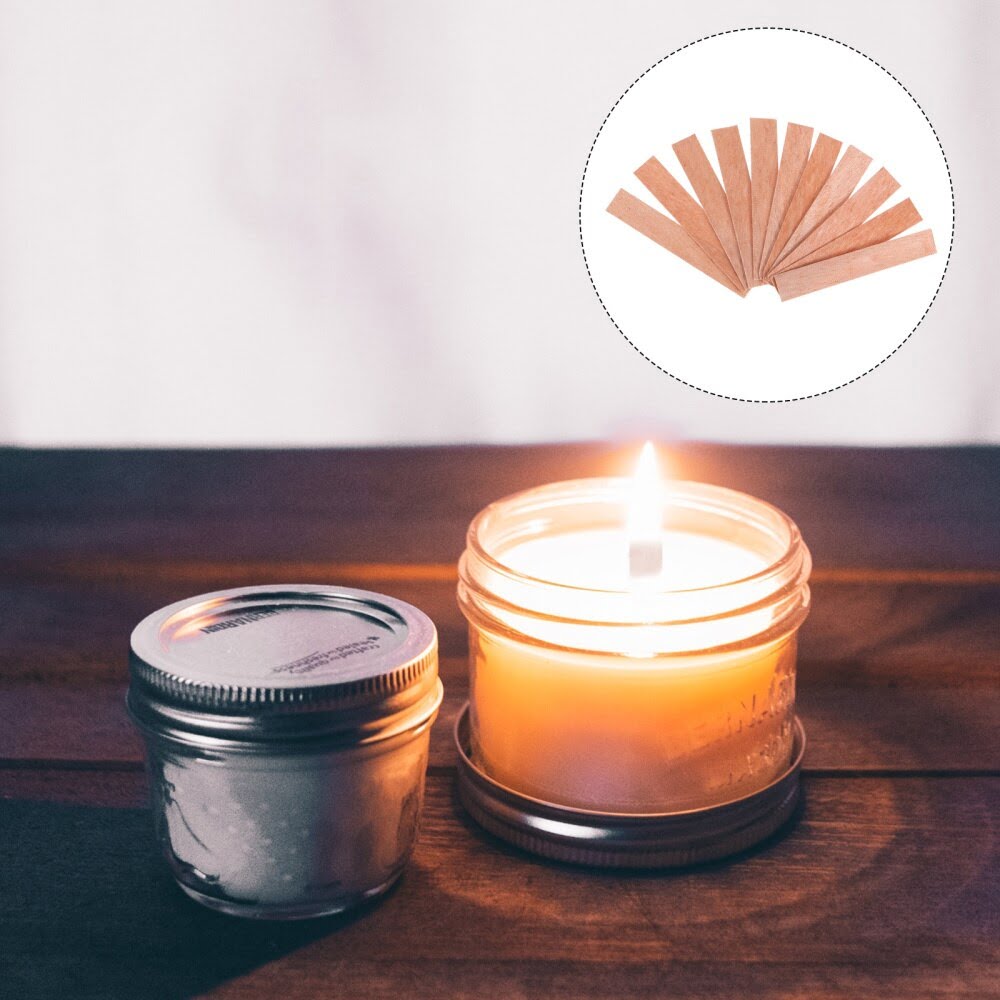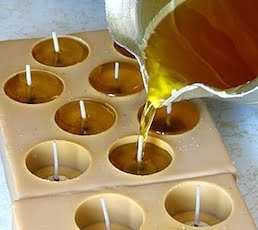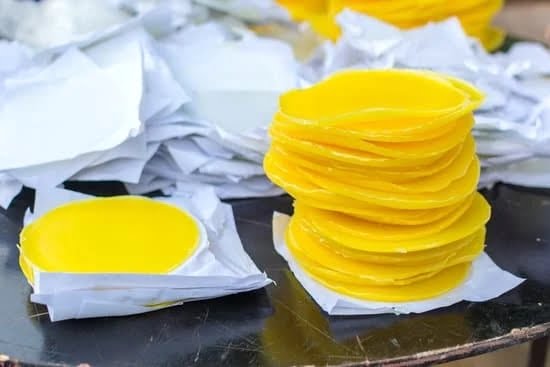The history of candle making dates back to ancient times, with evidence of candles being used as far back as 3000 BC. From their humble beginnings as a source of light, candles have evolved into a symbol of relaxation, celebration, and spirituality. The art and tradition of candle making have transcended through different cultures and civilizations, leaving an indelible mark on human history.
The origins of candle making can be traced back to various ancient civilizations such as Egypt, Rome, and China. This section will delve into the early techniques and materials used in crafting candles, shedding light on the creativity and ingenuity of our ancestors. By understanding the historical context of candle making, we gain insight into the evolution of this age-old craft and its significance in different societies.
As we embark on this journey through time, we will explore how candle making has adapted to changing technologies and societal needs. From traditional beeswax candles to the mass production methods during the Industrial Revolution, the evolution of candle making has been influenced by cultural practices, religious beliefs, and advancements in science. Join us as we uncover the captivating history behind one of humanity’s oldest traditions.
The Origins of Candle Making
The history of candle making dates back to ancient times, with evidence of candles being used as far back as 3000 BC in Egypt and Crete. Early civilizations, such as the Romans, Greeks, and Chinese, also developed their own methods of creating and using candles for various purposes. The origins of candle making can be traced to the need for light during the nighttime hours, as well as for religious ceremonies, rituals, and practical uses such as cooking and heating.
Ancient Methods of Candle Making
In ancient times, candles were typically made from natural materials such as tallow (animal fat), beeswax, and plant oils. The earliest known candles were made by dipping papyrus reeds into melted animal fat or other waxes. The Ancient Egyptians are credited with creating some of the earliest wicked candles using tallow and beeswax. The process involved rolling papyrus strips around a core and coating them with melted wax.
Candle Making in Medieval Europe
During the Middle Ages in Europe, candle making became an established trade with the development of guilds and specialized candle makers known as chandlers. Beeswax candles were highly prized due to their pleasant aroma and clean-burning properties, but they were expensive and primarily used in churches and by the wealthy. Tallow candles remained the most common type of candle used by the general population due to their affordability.
The history of candle making is a rich tapestry that weaves through different cultures, technologies, and time periods. From its humble beginnings with primitive materials to its modern-day advancements in production and sustainability efforts, the art of candle making continues to evolve while maintaining its timeless appeal.
The Evolution of Candle Making Techniques and Materials
The history of candle making dates back to ancient times, with evidence of candles being used in different civilizations and cultures. As the demand for candles grew, so did the need for more efficient techniques and materials for their production.
Early Techniques and Materials
In the early days, candles were made from tallow, which is animal fat, and beeswax. The process involved dipping wicks into the melted substance repeatedly until the desired thickness was achieved. This method was labor-intensive and time-consuming, making it impractical for mass production.
Introduction of New Materials and Techniques
As civilizations advanced, new materials such as spermaceti wax, paraffin wax, and stearin were introduced. These substances provided cleaner burning properties and allowed for a more consistent product. In addition to new materials, techniques such as molding and extrusion were developed to streamline the candle making process.
Industrial Revolution’s Impact
The Industrial Revolution marked a significant shift in candle making. With the invention of mechanized processes, such as candle molding machines and continuous wax pouring techniques, candles could be produced on a much larger scale. This led to greater accessibility and affordability of candles for the general population.
The evolution of candle making techniques and materials has played a crucial role in shaping the industry into what it is today. From its humble origins using tallow and beeswax to modern methods incorporating paraffin wax and automated production lines, the history of candle making is a testament to human innovation and ingenuity.
Candle Making in Different Cultures and Civilizations
The history of candle making can be traced back to ancient times, with evidence of candles being used in various civilizations such as the Egyptians, Romans, and Chinese. In Egypt, the use of rushlights-candles made from reeds soaked in animal fat-dates back to 3000 BCE.
The Romans are known for using tallow or beeswax to create candles, which were primarily used for religious ceremonies and illumination during festivities. In China, candles were made from whale fat or tallow and were primarily used for illumination.
As civilization advanced, so did the techniques and materials used in candle making. In medieval Europe, tallow candles were the most common due to the availability of animal fats. However, with the introduction of beeswax by monks during the Middle Ages, candles became a symbol of purity and spirituality in religious ceremonies.
In India, the tradition of making candles from ghee (clarified butter) has been part of Hindu rituals for centuries. The use of ghee lamps is considered sacred in Hindu culture and is believed to dispel darkness and bring prosperity. The tradition of candle making differs across cultures and civilizations, each with its own significance and symbolism.
| Example | Data |
|---|---|
| Egyptian Candle Making | Rushlights made from reeds soaked in animal fat dating back to 3000 BCE |
| Roman Candle Making | Use of tallow or beeswax for religious ceremonies and festivities |
| Chinese Candle Making | Candles made from whale fat or tallow primarily used for illumination |
The Role of Candles in Religious and Spiritual Practices
Candles have played a significant role in religious and spiritual practices throughout history. The use of candles in these settings dates back to ancient times, and their symbolic significance varies across different cultures and faiths. In Christianity, for example, candles are often used during religious ceremonies and are seen as representing the light of Christ. In Buddhism, candles are used as offerings to the Buddha and symbolize enlightenment.
In addition to their symbolic meanings, candles are also used practically in religious and spiritual rituals. They provide light in dimly lit places of worship, create a sense of tranquility during meditation, and serve as a focal point for prayer. The act of lighting a candle can also be a deeply personal and meditative experience for individuals seeking solace or guidance.
The tradition of using candles in religious and spiritual practices has persisted into the modern day, with many people incorporating them into their daily routines for mindfulness and reflection. Furthermore, the popularity of scented and decorative candles has expanded their use beyond traditional religious settings, with many individuals using them to create sacred spaces in their homes for personal meditation and relaxation.
Despite the modern advancements in candle making techniques and materials, the spiritual significance of candles remains deeply rooted in history.
| Religious/Spiritual Practice | Symbolic Meaning |
|---|---|
| Christianity | Representation of the light of Christ |
| Buddhism | Offerings to the Buddha, symbolizing enlightenment |
The Industrial Revolution and the Modernization of Candle Making
During the Industrial Revolution, candle making underwent significant changes as new technologies and manufacturing processes emerged. This period marked a shift from traditional hand-dipping and tallow rendering to the mass production of candles using machinery and new raw materials. The influence of the Industrial Revolution on candle making can be seen in several key developments:
1. Introduction of mechanical candle making: The invention of candle-making machines revolutionized the industry, allowing for faster production and more standardized candles. These machines automated the process of dipping wicks into wax or molding candles, increasing efficiency and output.
2. Utilization of alternative raw materials: With the discovery and refinement of paraffin wax, derived from petroleum, candle makers had access to a new material that was cheaper and more consistent in quality than tallow or beeswax. This innovation allowed for the production of cleaner-burning and more affordable candles.
3. Expansion of consumer markets: The industrialization of candle making led to increased accessibility and affordability, expanding the consumer market beyond religious, ceremonial, and practical uses. Candles became more commonplace in households as a source of light, decoration, and ambiance.
As modernization spread across Europe and North America during the 19th century, these advancements in candle making contributed to the growth of industries that supplied candles for both domestic and commercial purposes.
Candle Making in the 21st Century
In the 21st century, candle making has undergone significant changes to adapt to modern trends and technological advancements. This ancient art and tradition have not only survived but also thrived in a world where electric lighting is now the norm. Here are some of the trends, innovations, and sustainability efforts that have shaped the candle making industry in recent years:
1. Eco-friendly Materials: With an increasing awareness of environmental issues, many candle makers have shifted towards using sustainable and natural materials such as soy wax, beeswax, and coconut wax. These materials not only burn cleaner but also have a smaller impact on the environment compared to traditional paraffin wax.
2. Customization and Personalization: In today’s market, consumers are looking for unique and personalized products. Candle makers have responded to this demand by offering customizable options such as bespoke scents, colors, and designs. This trend has given rise to small artisanal candle-making businesses that cater to niche markets.
3. Technology Integration: The use of technology has revolutionized the way candles are made and sold. From advanced fragrance blending techniques to online platforms for selling custom-made candles, technology has enabled candle makers to reach a wider audience and streamline their production processes.
4. Sustainable Practices: Many candle makers are now focusing on sustainability throughout the entire production process – from sourcing raw materials to packaging design. This includes using recyclable or biodegradable packaging, reducing waste in production, and supporting ethical labor practices.
As we move further into the 21st century, it is clear that the history of candle making continues to evolve with new trends, innovations, and a strong focus on sustainability. From eco-friendly materials to customizable options, technology integration, and sustainable practices – modern candle making reflects a commitment to meeting consumer demands while honoring its ancient origins.
The Influence of Candle Making on Art, Literature, and Pop Culture
In conclusion, the history of candle making is a fascinating journey that has spanned centuries and transcended cultures. From its humble origins using natural materials to the modernization of techniques during the industrial revolution, the art of candle making has continued to evolve. Throughout history, candles have played a significant role in various religious and spiritual practices, as well as in different cultural traditions.
As candle making techniques advanced, so did its influence on art, literature, and pop culture. Candles have been a source of inspiration for artists and writers alike, with their symbolic significance being portrayed in paintings, poems, and novels. In addition to their artistic influence, candles have also become iconic symbols in popular culture, representing romance, mystery, and tranquility.
Today, candle making continues to thrive in the 21st century with an emphasis on sustainability and innovation. The demand for artisanal candles made from natural materials has increased as consumers seek more environmentally friendly products. Furthermore, the advent of new technologies has led to innovative designs and fragrances that cater to diverse consumer preferences.
Overall, the history of candle making is a testament to the enduring appeal of this ancient tradition. As it continues to leave its mark on art, literature, and pop culture, it remains an integral part of human expression and creativity. Whether it is used for religious ceremonies or simply to create a cozy atmosphere at home, candles will continue to hold a special place in our lives for years to come.

Welcome to my candle making blog! In this blog, I will be sharing my tips and tricks for making candles. I will also be sharing some of my favorite recipes.





